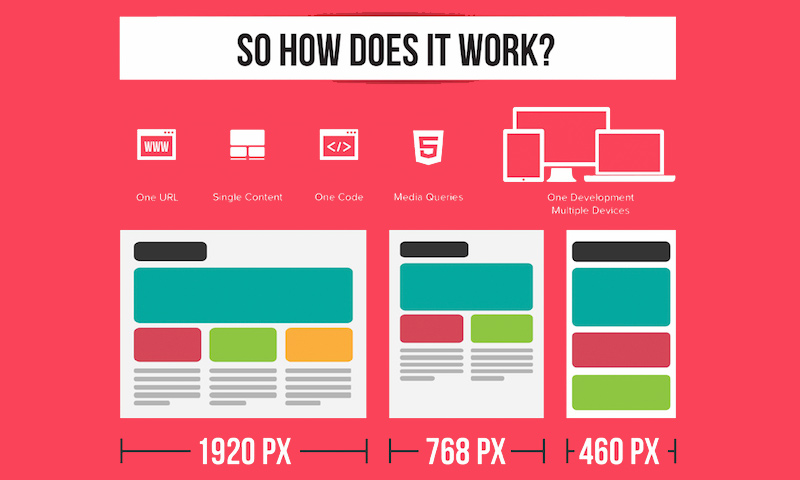Prepare Yourself To Journey With Time And Discover How Internet Sites Have Actually Become Extra Sophisticated, Easy To Use, And Aesthetically Magnificent
Prepare Yourself To Journey With Time And Discover How Internet Sites Have Actually Become Extra Sophisticated, Easy To Use, And Aesthetically Magnificent
Blog Article
Writer-Thorsen Molina
In the past, sites were easy and concentrated on information. Navigation was direct, and layout was for desktops. Currently, user experience is crucial. https://www.bangkokpost.com/thailand/pr/2247063/digital-marketing-tactics-for-owners-to-increase-sales-chat-and-customer-service guides layouts for easy navigation. Responsive layouts match various tools. Today, dark setting lowers stress, and minimal menus boost navigation. Interactive attributes engage individuals, and bold visuals attract attention. AI assimilation improves engagement. See exactly how style has advanced to boost your on-line journey.
Very Early Days of Web Design
In the early days of web design, simpleness reigned supreme. Sites were fundamental, with minimal shades, typefaces, and designs. The focus was on giving information rather than showy visuals. Individuals accessed the net with slow-moving dial-up links, so rate and capability were essential.
Navigation menus were straightforward, generally located on top or side of the page. Websites were made for home computer, as mobile browsing wasn't yet common. Web content was king, and developers focused on very easy readability over intricate layout aspects.
HTML was the main coding language made use of, and developers needed to function within its restraints. Computer animations and interactive features were marginal compared to today's requirements. Websites were static, with little dynamic content or tailored customer experiences.
Increase of User-Focused Design
With the development of website style, a shift towards user-focused layout principles has come to be increasingly famous. Today, developing websites that focus on individual experience is critical for engaging site visitors and attaining service objectives. User-focused style includes comprehending the needs, choices, and habits of your target market to customize the site's layout, content, and includes appropriately.
Developers currently perform comprehensive research study, such as user studies and usability screening, to collect understandings and feedback directly from users. This data-driven approach helps in developing user-friendly navigation, clear calls-to-action, and visually enticing user interfaces that resonate with visitors. By placing the customer at the facility of the layout process, web sites can deliver a much more customized and pleasurable experience.
Receptive design has actually also emerged as a key aspect of user-focused style, guaranteeing that websites are enhanced for different gadgets and display dimensions. This flexibility enhances availability and use, catering to the varied means customers connect with web sites today. Basically, the increase of user-focused layout represents a change towards developing digital experiences that focus on the demands and expectations of completion individual.
Modern Trends in Website Design
Explore the latest patterns forming web design today. One prominent trend is dark mode style, using a smooth and modern-day look while reducing eye stress in low-light atmospheres. Another vital fad is minimalist navigating, simplifying menus and enhancing customer experience by focusing on essential elements. Including micro-interactions, such as computer animated switches or scrolling effects, can produce an extra appealing and interactive internet site. Receptive layout remains important, making certain smooth user experiences throughout different gadgets. Additionally, utilizing vibrant typography and asymmetrical designs can add aesthetic passion and draw attention to specific material.
Integrating AI technology, like chatbots for client assistance or individualized referrals, enhances customer engagement and improves procedures. Availability has also end up being a substantial pattern, with developers focusing on comprehensive layout methods to accommodate varied customer demands. Welcoming sustainability by optimizing site performance for speed and performance is an additional arising fad in website design. Working together with customer feedback and information analytics to iterate and boost design continuously is important for remaining relevant in the ever-evolving digital landscape. By accepting these modern-day patterns, you can create a visually enticing, straightforward web site that resonates with your audience.
Verdict
As you reflect on the advancement of internet site style from the early days to currently, you can see exactly how user-focused design has ended up being the driving pressure behind contemporary patterns.
Embrace the journey of change and adjustment in website design, always keeping the user experience at the center.
Tippingpointdigital
Stay existing with the current trends and innovations, and never stop advancing your method to produce visually stunning and user-friendly web sites.
Evolve, adjust, and develop - the future of web design is in your hands.
